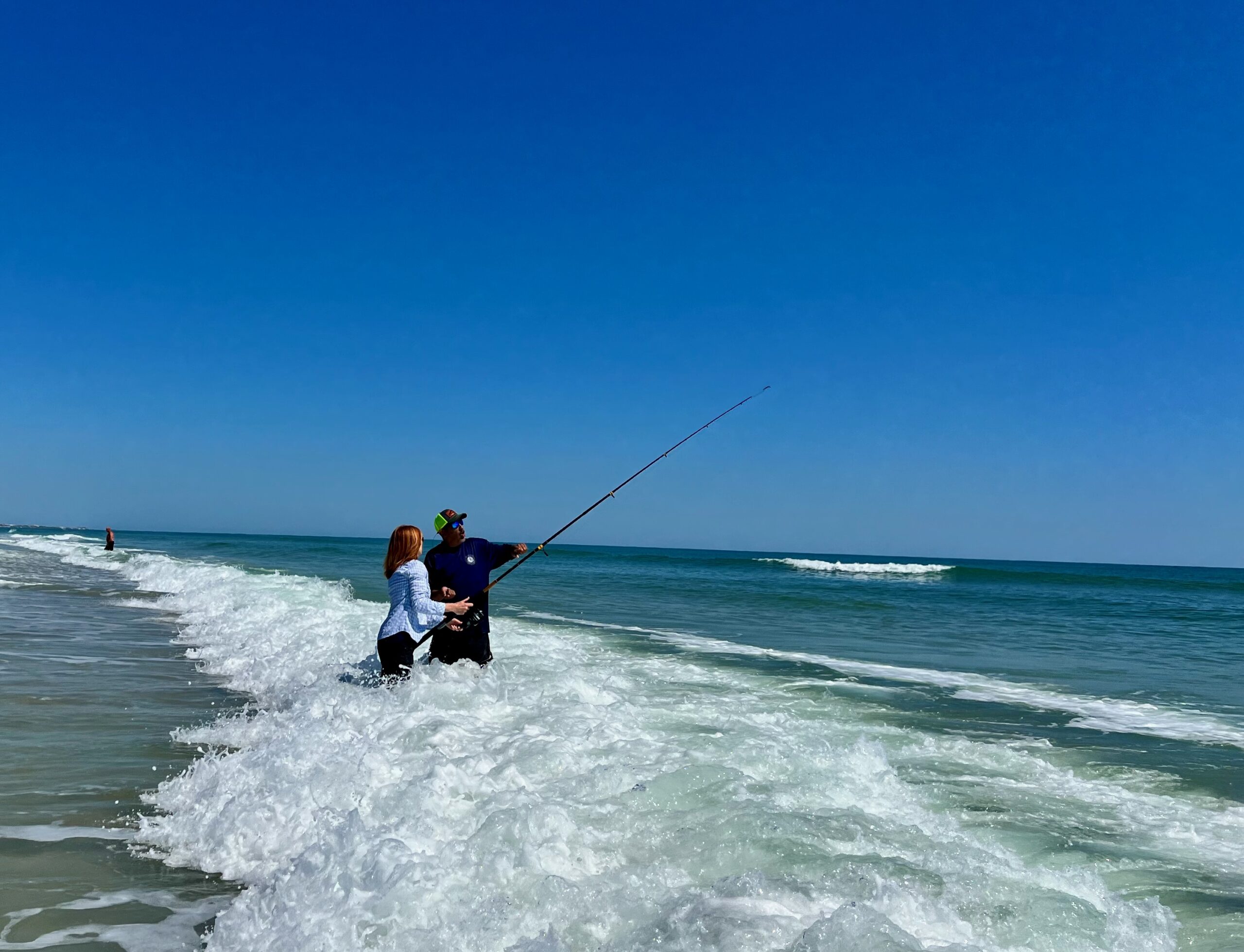Surf Fishing for Beginners
One of the things I love most about fishing besides just spending time outdoors is experiencing new waters, unfamiliar methods and trying for new species.
Surf fishing is something new to me. It was intimidating at first (honestly, where do you aim to cast in the ocean?) but with the right tools and guidance I learned to lean into this fun way of fishing. Surf fishing gives anglers another way to enjoy saltwater fishing especially if you don’t have access to a boat or prefer to stay on land.
Don’t get me wrong, there’s a learning curve with surf fishing, but I must admit it’s a fun one. I mean, who can get frustrated when you’re standing in the ocean waves and enjoying being so immersed in the process?
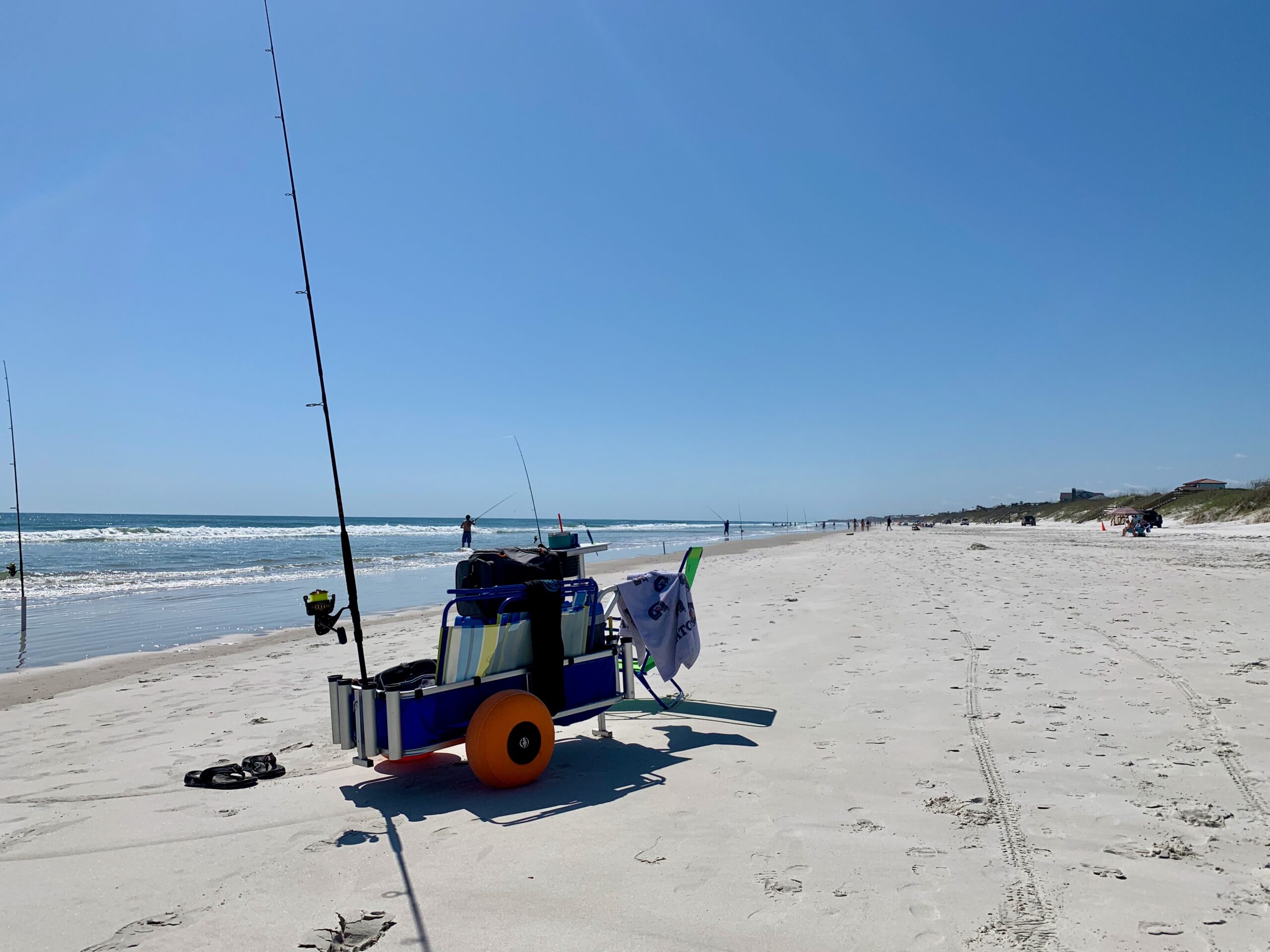
Where to fish
It goes without saying that doing any kind of fishing anywhere you plan to visit requires a little research. You want to have a baseline knowledge about the area you are visiting, the species available to catch and the times of year that are ideal for fishing. You also want to know the beaches available for surf fishing and the kinds of conditions you might encounter.
When you get to your destination, scout the beaches for potential fishing spots before heading there with your gear. Specifically, you are looking for the sandbars. Fish are generally near the sandbars chasing bait and feeding near the breaks that are created by outflows and rip currents.
You also want to talk to local anglers who are fishing and catching. Generally, local anglers are happy to offer tips to those visiting the area.
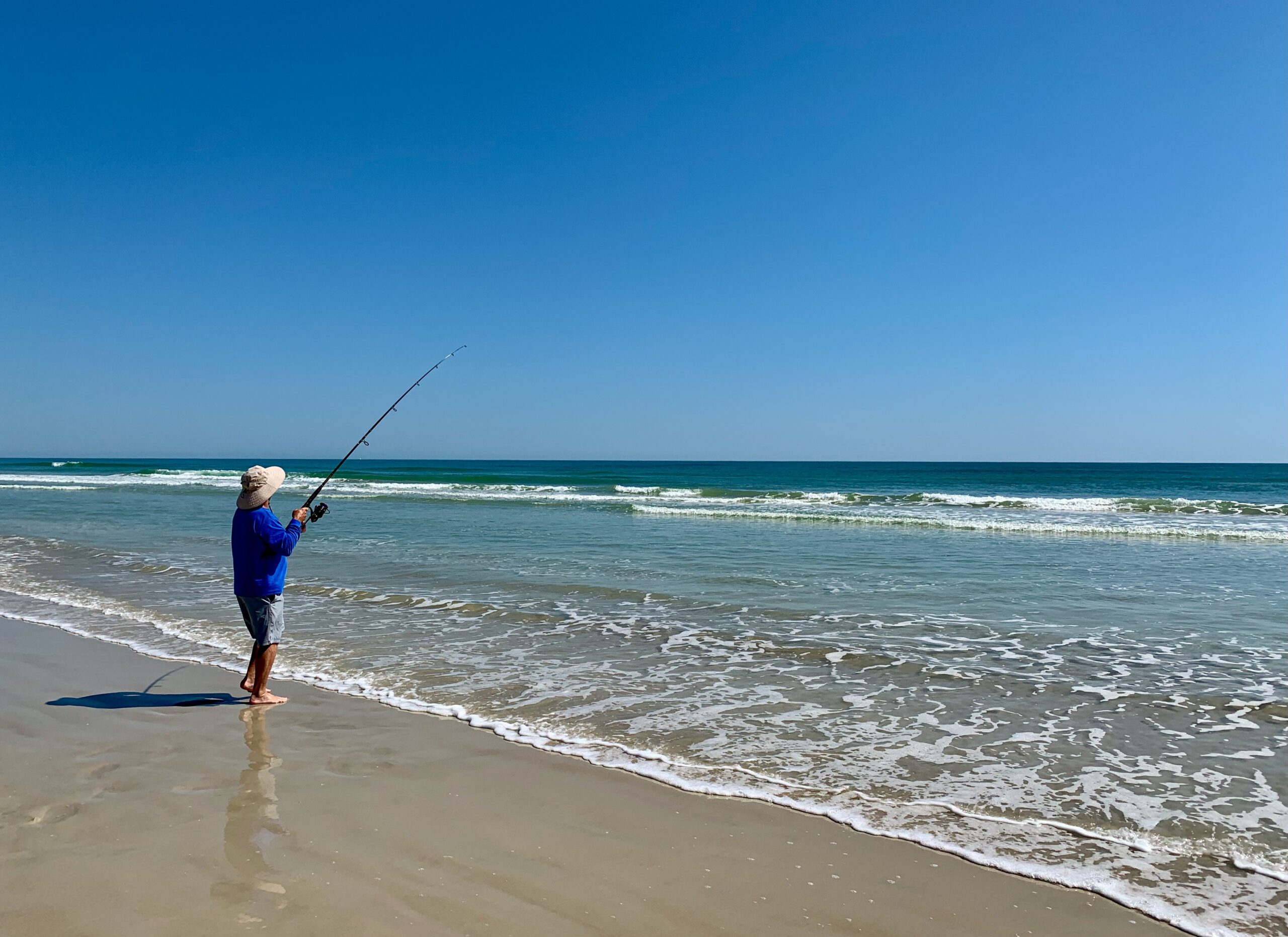
When to fish
Knowing the times of day that are most productive for surf fishing is as important as knowing where to fish on the beach. These opportunities change daily as the tide changes so you will want to look at a tidal chart before your trip.
As the tides impact fish feeding behavior it is generally recommended to fish just before or just after the tide changes. Some species feed during the high tide at dawn and dusk when there is more water, while other species prefer the low tide. Low tide is also an opportunity to see the details of the beach topography when hollows, structures and dips in the sand are visible.
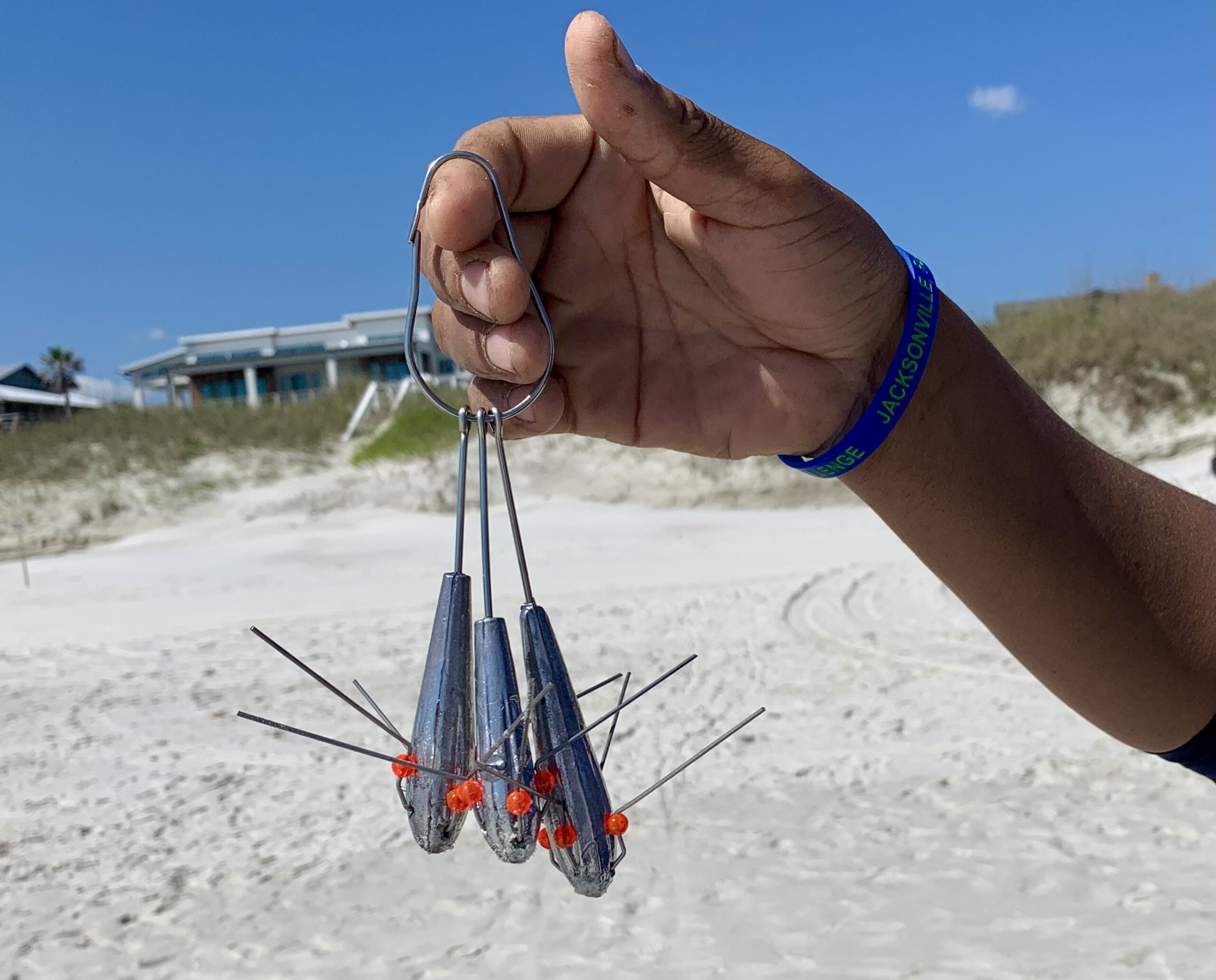
Surf fishing gear
I like to keep things simple, especially when it means being mobile on the beach. A great surf fishing guide will have everything for you but if you venture out on your own, keep your gear simple and add to what you need over time as your experience improves.
If you are new to surf fishing it is wise to start out by renting gear and tackle from a local shop before investing in your own. Surf fishing gear required varies depending on the location. You might also find that after trying surf fishing a few times that it’s not for you, so there’s no sense in spending a lot until you know for sure.
Basic surf fishing gear will include: a saltwater fishing rod 10-15 feet long; and saltwater spinning reel with 20-pound test line; weights (sputniks or pyramid lead sinkers); leaders; hooks; bait; bait bucket and air pump; rod holder; back-up spool of line; knife and pliers. It’s always smart to have a first aid kit available along with your polarized sunglasses and sunscreen.
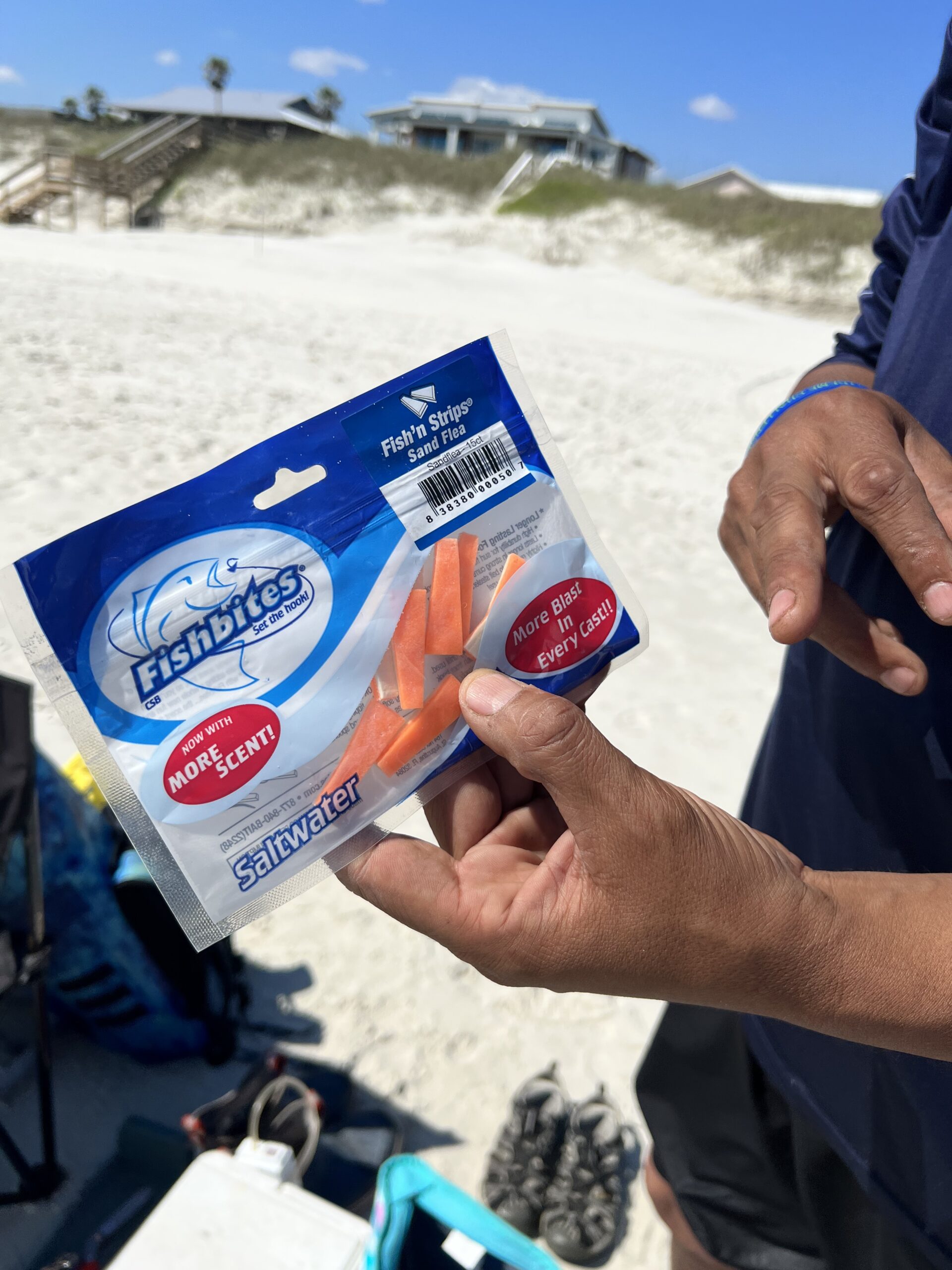
Bait
Decisions on bait depend on the species you are targeting, and this will change depending on your location and time of year.
Smaller fish generally prefer bait like frozen shrimp or squid. The bigger species like redfish or shark prefer larger bait like chunks of mullet.
Artificial bait is another option for surf fishing. Topwater plugs and spoons are great when the water is calm. To add in a bit of local flavor (literally) you can find artificial additions like Fishbites that are available at tackle shops in flavors that mimic local baitfish.
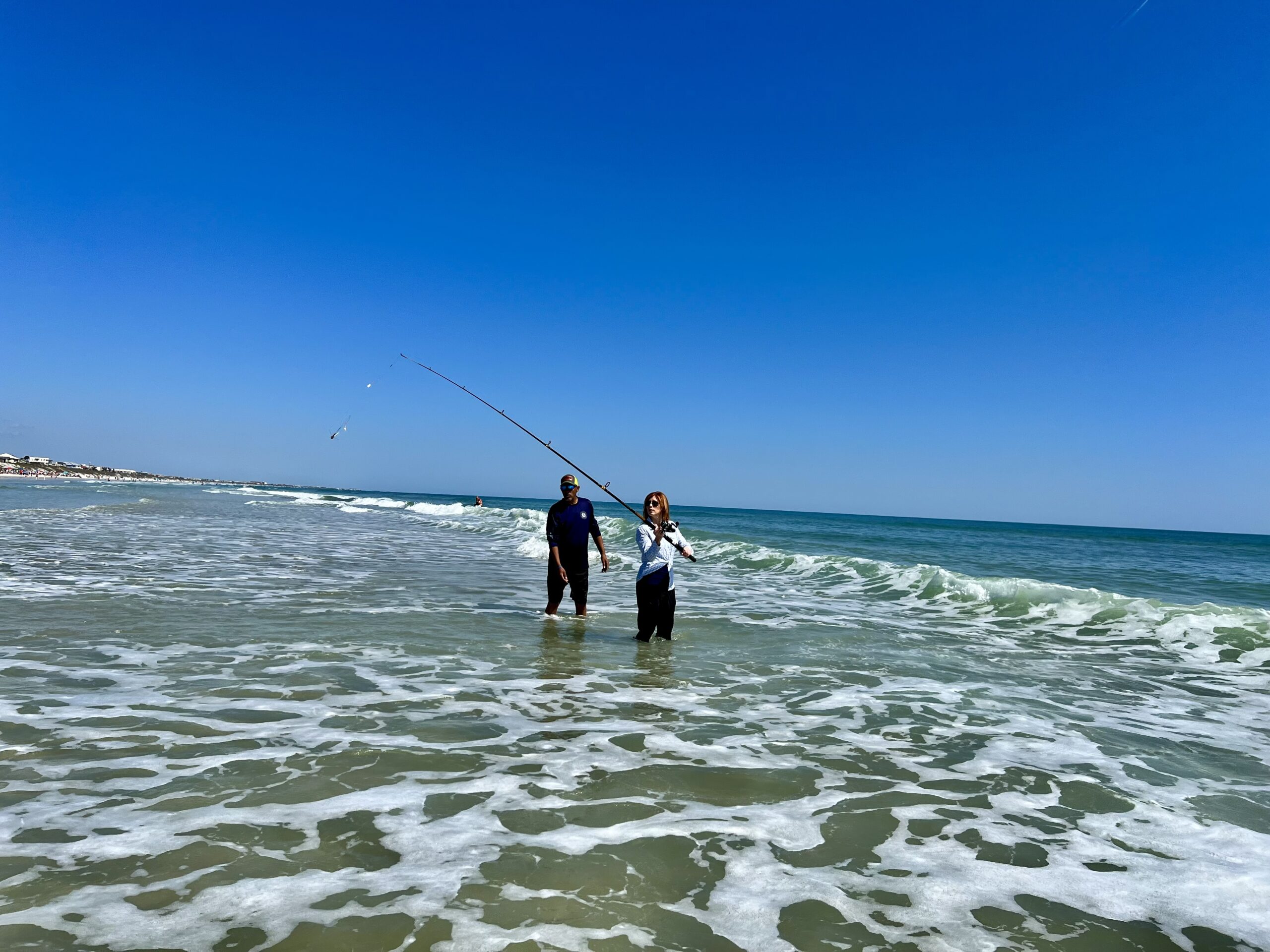
Casting Technique
Your casting technique might be the most challenging part of the surf fishing learning curve but it’s also the most important. Success in the surf relies on landing your bait as far as possible past the wave breaks where the fish are feeding. This isn’t an easy task when you must put momentum into casting an extended rod while bracing yourself against the waves that might be up to your chest. If you are new to surf fishing, plan on taking time to practice your cast and plan on getting knocked over a few times in the surf.
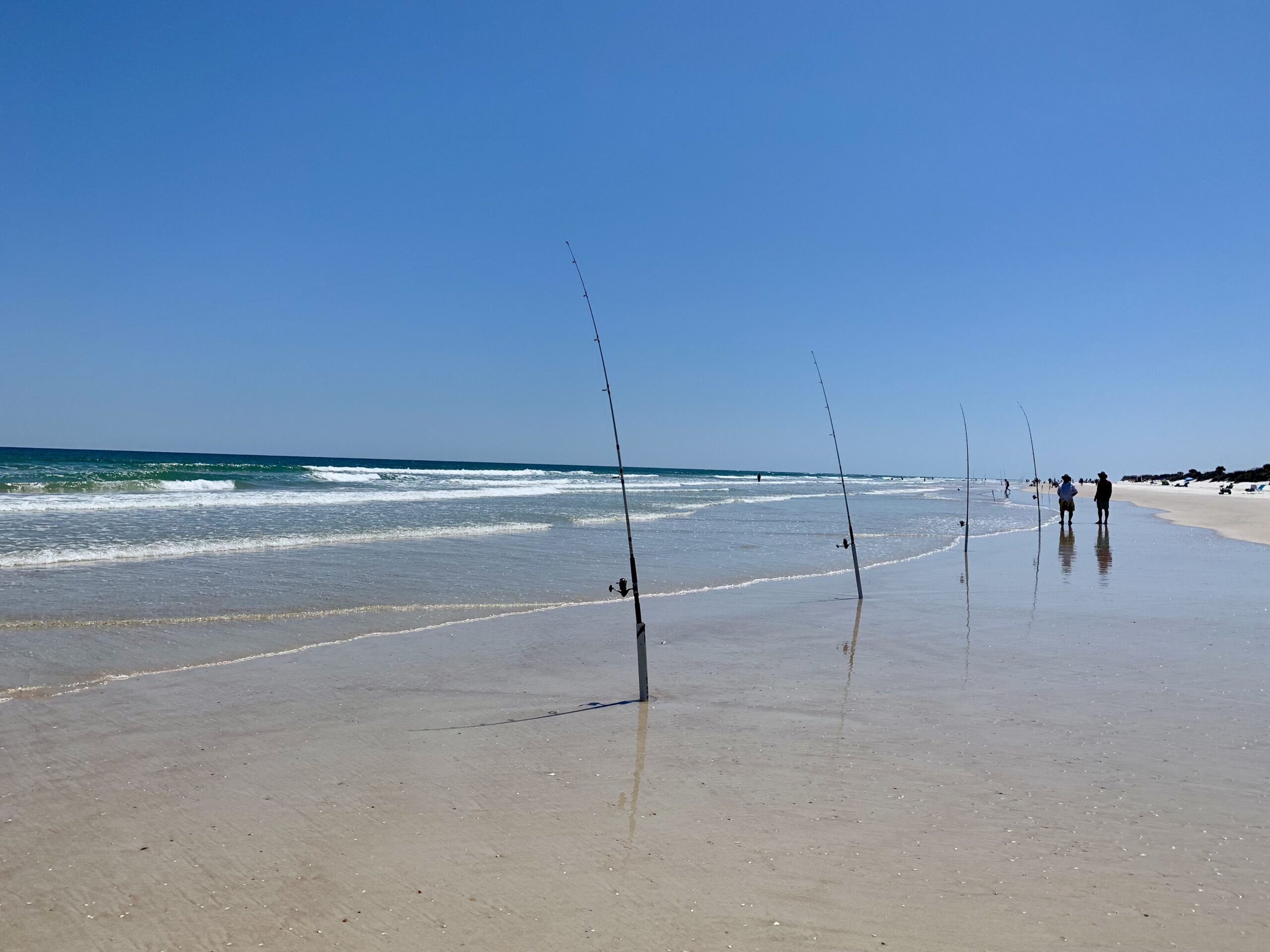
Insider tips for fishing for surf fishing:
- Get a fishing license. Get a valid fishing license from the state in which you will be fishing.
- Hire a local guide. If you are new to surf fishing or new to the area you are visiting, you will save a lot of time by hiring a guide who knows where to go and understands the local tides. Be sure to budget in a tip for your guide.
- Renting tackle. If you are traveling far to this destination, do some research ahead of time to find out if you can rent tackle as opposed to traveling with your own.
- Hook and cook. Look for local hook and cook restaurants where you can take your catch and enjoy the local preparation of it for a memorable dinner to round out the experience.
